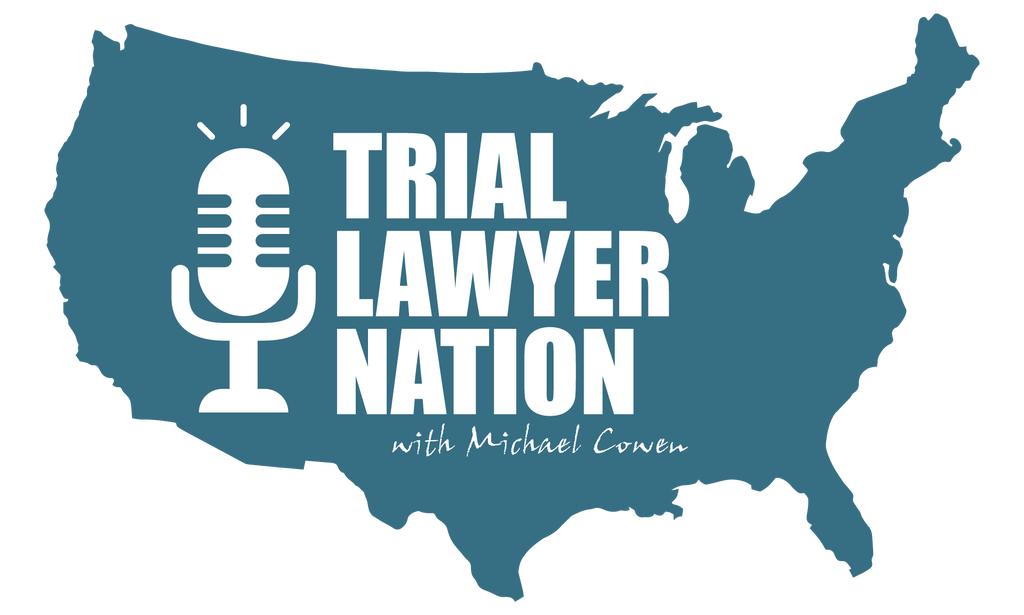“In this Trial Lawyer Nation podcast, Michael Cowen sits down with Cynthia Rando, a Certified Human Factors Professional who also operates as an expert witness on human factors in the courtroom.
Knowing she always wanted to run her own business, Cynthia started her career at NASA Johnson Space Center in Houston, Texas as a human factors engineer, working with the space station program where some of her work is still flying in space, assisting the crew it their missions. Michael notes the space station as an environment where the margin of error is small, and the consequence of error is huge to which Cynthia describes them as one of the most hostile environments you could ever have to design for and in the most stressful safety type environment.
Digging right in, Michael asks the question which is likely to be on most listeners minds – what exactly is “human factors?” Cynthia describes human factors as an extremely broad science that deals with how people interact and perceive their environment, the things they use in that environment, and also how they interact in work with other people. She goes on to boil it down to two things: 1. helping people optimize what they do well, whether it’s through design or understanding of human behavior, and also your physical body shape and limitations and, 2. mitigate what we don’t do well to avoid risk of injury or human error. For example, she describes driving perception, where a lot of people have issues on the roadway taking turns, so it is considered a very high cognitive load task. The human factors look at the process and procedure that the person took in taking a turn, the visibility of oncoming traffic, what that person or reasonable driver could have been able to see, and if all conditions were perfect, did they take the right steps.
Michael and Cynthia continue to explore examples and how they determine these scenarios retrospectively. It’s interesting to hear how her firm, Sophic Synergistics, doesn’t do accident reconstruction, but rather often works extremely close with the accident reconstructionist on the case. Cynthia describes her process of going out to conduct a site visit in order to look at the environment, the design of the roadway, where the vehicles were, and the vantage points for all the drivers or entities involved, including pedestrians, which establishes what everybody could see from their vantage point in a reasonable fashion. From there, she’s looking for the best line of facts which line up in corroboration with each other and which make the most sense in terms of probability based on what you know as human factors. Examples of this would be whether there is a question of reaction time, perception, performance, or if speed was involved or not. She describes it as dissecting the actions, behaviors, as well as the cognitive processes, to know what was possible or what wasn’t, based off the actual physical environment. In other words, it leads to understanding what the facts are telling you, and where they align and where they don’t.
To understand more on how this might work in other types of cases, Cynthia describes a product liability case which involved a consumer product marketed to adults but ended up being used by children. She describes the product’s design as having been so attractive to little children that the children ended up becoming the primary users despite all the company’s efforts to say this product isn’t for kids. She goes on to describe how labeling is also hard to use as a strong enough warning because we, as human beings, are bad at seeing risk and how it pertains to us, making it very difficult to convince people via labeling. A great example Michael brings up of how those risks impact our behaviors is wearing your seatbelt, because there have always been consequence of dying, looming among us all if we don’t wear our seatbelt, but it wasn’t until laws were passed which extended the consequence to something as simple as getting a $200 ticket became associated with it, sparking more people to relate to it. Cynthia goes on to explain why this example worked saying “you need to believe the consequence, and if the consequence has never happened to you or you’ve never known someone to experience it, then you don’t really think it will happen to you.” IE: Perhaps you might not know someone who has died from not wearing their seatbelt, but you likely have experienced being pulled over, or know someone who has been, making the $200 ticket a more “real” potential consequence.
Michael and Cynthia continue to explore several other examples of human factors and how they become introduced in courtroom cases, as well as the many other areas Cynthia’s full-service human factors consulting firm works with using human factors in a wide variety of other industries. The detail to which they discuss human factors in this episode goes well beyond the surface and provides a great understanding in how they play a seemingly granular role with potentially momentous impacts … not unlike how they pertain to space stations.”
– Trial Lawyer Nation with Michael Cowen


